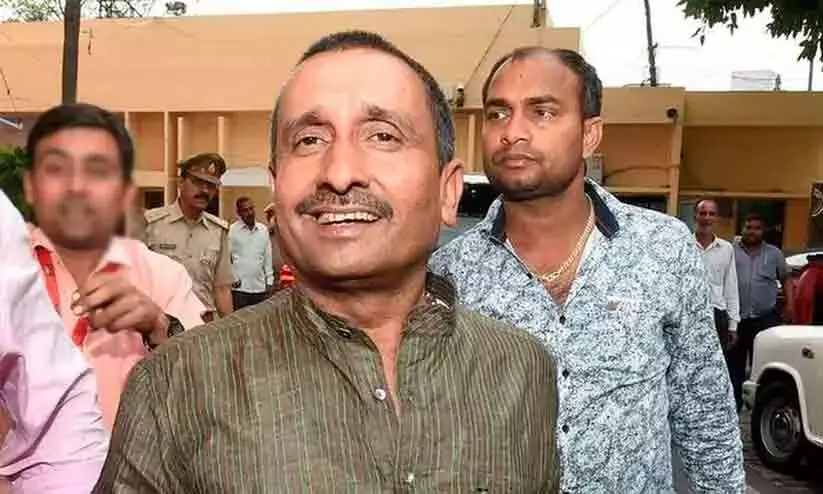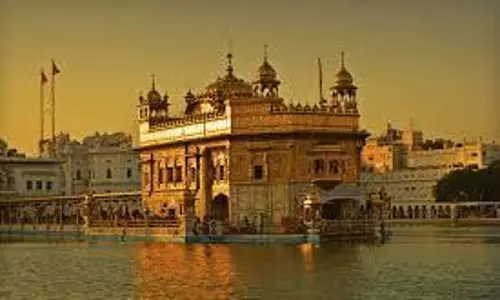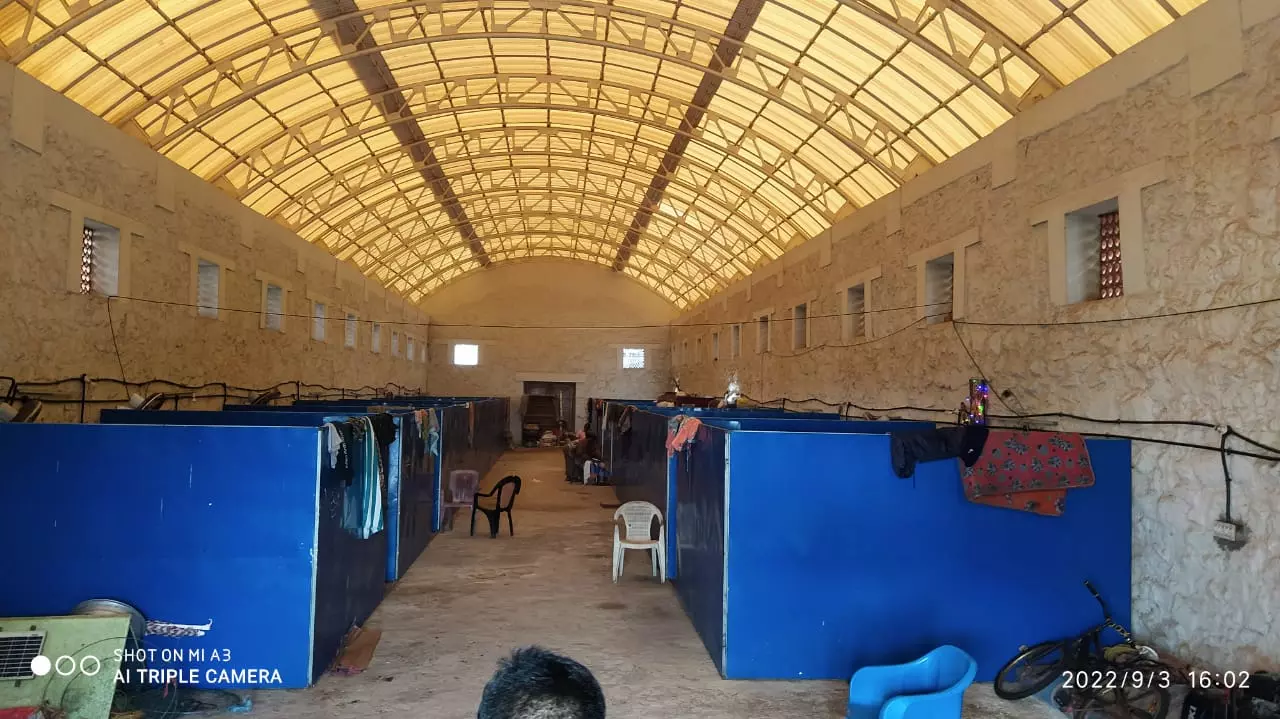
The coastal community who pay the price for Adani's Sea Port
text_fieldsThiruvananthapuram: While Kerala is busy preparing to welcome the Onam, Reni Dixon Seraphin (25) with her husband Dixon, a fisherman and two children, is living in a 10X 10-foot makeshift cabin without a ceiling over their head and has no such dreams. Reni and 60 other families are living in four relief camps in Valiyathura in Thiruvananthapuram. She had moved to the camp in 2021.
But most of the families have been living in extremely bad conditions in these camps for the last five years. The camps owned by the Food Corporation of India (FCI) were once used to store cement. Around 300 people were forced to shift to the camps after their houses were destroyed in the coastal erosion. The inhabitants are from the coastal belt of Valiyathura, Kochuthoppu and Cheriyathoppu.
The living conditions of people in the camps compared to the world-famous 'Kerala model' is pathetic. Eight or seven families are forced to share single10X10 foot long cubicles without any roofs. In each cubicle, there is hardly enough space for a bed and table. The table is used as an improvised kitchen as gas stoves are placed on it. Television is placed on a small stool and all the belongings of the family members were placed in suitcases under the bed and on the corners of the so-called 'room'.
Many of the displaced families are comprised of two to six families as they lived under one roof in the houses which had been washed away in the coastal erosion. But in the camp government had allotted only a single cubicle to the whole family which may include babies to bedridden elders.
The rough surface of the floor in the camp has a thick coat of dust on it. "The children and elders are the most affected by this dust," said Reni. "The girls and women are mostly affected. There is no privacy for them here. There are also two or three paralyzed people in the camp." she added. "There are only eight toilets and six bathrooms for the entire 60 families", Reni said to Online Madhyamam English.
"As the corporation would fill the tank only after 11 am in the morning most of the children have to go to school without washing their hair," she added. Reni had also said that her family was shifted to the camp after they were evicted from the school with other families. "We had to perform a sit-in protest in front of the maritime board in a full night to move here. When we came here my youngest child was 20 days old. Now she is 11 months old," Reni said.
The coastal erosion intensified after the construction work at the Adani-owned Vizhinjam Seaport limited started. Work has been in progress for the construction of a 3,100-meter-long breakwater at the seaport.
According to the port officials, 1350 meters of the breakwater had been built. The coastal community in Thiruvananthapuram is on a continuous protest in front of the construction site of the Vizhinjam Adani port at Mullooor.
The fishermen folks living in the camp also admit the occurrences of coastal erosion even before the Adani port laid its foundation but never in such severity had the erosion happened as witnessed after the beginning of the construction that the sea entered into a great stretch along the coast, devouring their homes.
In the monsoon season, in the rough weather, one row of houses was destroyed in the waves. But after the construction of the breakwater at the Vizhinjam port started the sea moved deeper into the coastal area.
The houses caved in. Houses once situated far away from the beach were destroyed in the waves. On September 5, the priests, nuns and believers led by Arch Bishop Dr Thomas J Netto and former ArchBishop Dr Soosai Pakyam of the Latin diocese started a relay hunger strike at the protest venue. The relay strike of the coastal community under the Latin dioceses has now crossed over fifty days.
The protest committee wanted an immediate half of the port construction and the formation of an expert panel to study the adverse impact of the construction activities on the coastal area.
The demands put forth by the protestors include proper rehabilitation of those families who lost their homes in the coastal erosion, and they are to be provided lands and houses to be built thereupon by an agency appointed by the government.
But, what the government has offered is only Rs 5,500 as monthly rent for housing.
On Tuesday, Chief Minister Pinarayi Vijayan distributed the amount, but the inhabitants at the Valiyathura camp are said to have refused the government aid over a boycott call made by the Latin diocese.
Chief Minister's statement reasoning the coastal erosion on the north of Vizhinjam port as the impact of climate change has been dismissed by Archbishop Thomas J Netto. The protestors also pointed out the double standard of the government in the announcement of compensation to the coastal community as compared to the rehabilitation packages offered to the families affected by the proposed high-speed K Rail project.
While the affected families of the K-Rail project are expected to be provided with attractive rehabilitation packages, the coastal community who lost their lands and houses due to the coastal erosion have been offered only a paltry package.
"Whereas here, the government is offering flats in the lands owned by the diary development board to the people living in the temporary makeshifts," said the Protest Committee convenor Father Theyodecious D'Cruse.
"The government-offered land is a sewerage farm and people who have been offered flats on this land had once owned two to five cents of the land. In effect, by accepting the flats, the land owners become landless and will be forced to be satisfied with the flats. It is because of this that the Committee demands the government to compensate the people with lands and houses for their lost ones," he added.























